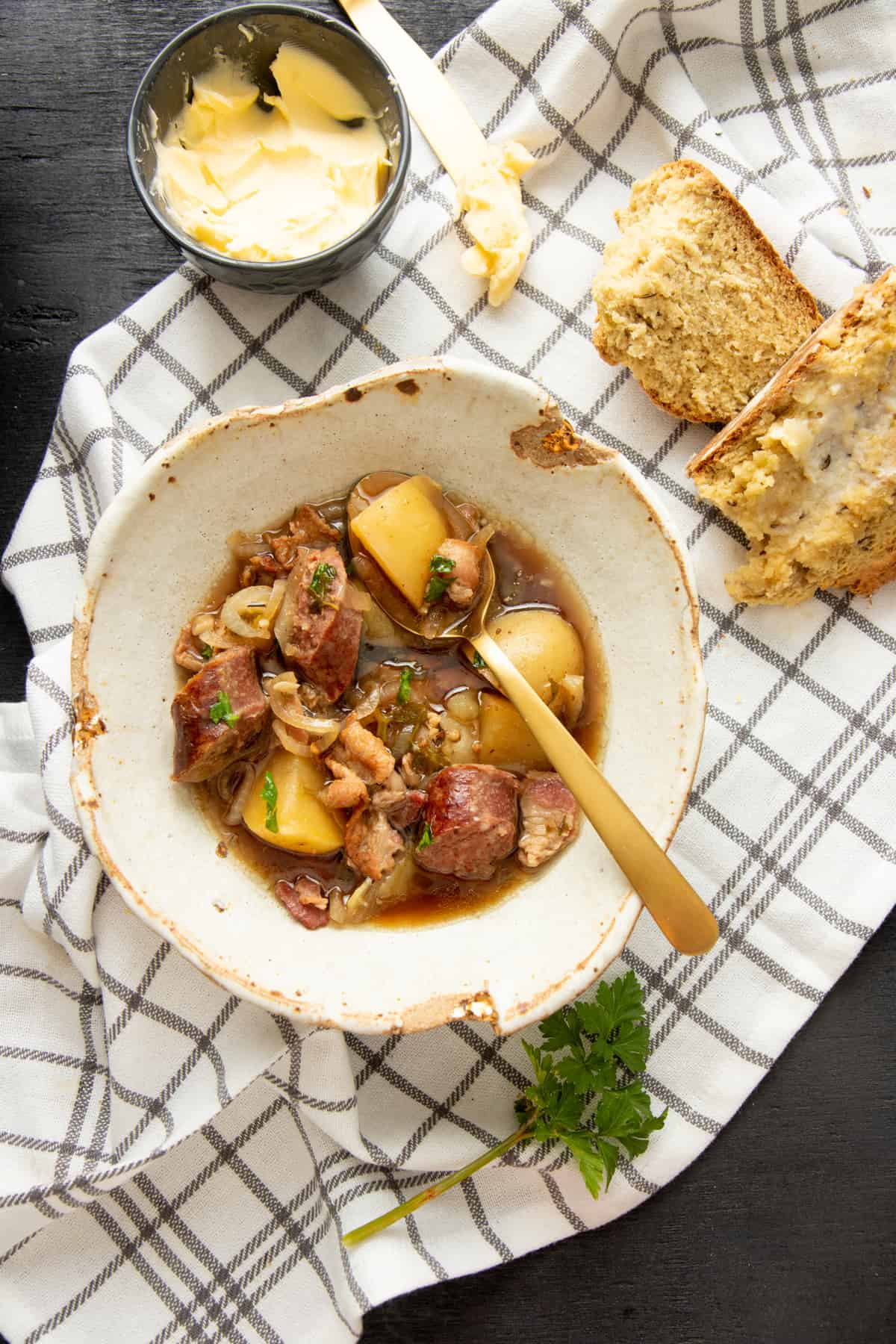I know many of you will be celebrating St. Patrick’s Day with corned beef and cabbage, and no offense to you guys (I mean, I love corned beef and cabbage, too), but this Dublin coddle is what you should be having instead. It’s hearty, it’s easy, it’s delicious, and from my research, it’s a more authentic way to celebrate Ireland than corned beef.
Granted, I’m pretty much the last person who should be writing with any authority about Irish culture. The entirety of my education on Ireland came from this awesome Irish restaurant in my college town that I went to weekly. I don’t have many Irish ancestors. I’ve never been to Ireland. But that doesn’t make this any less delicious. So I’m going with it.
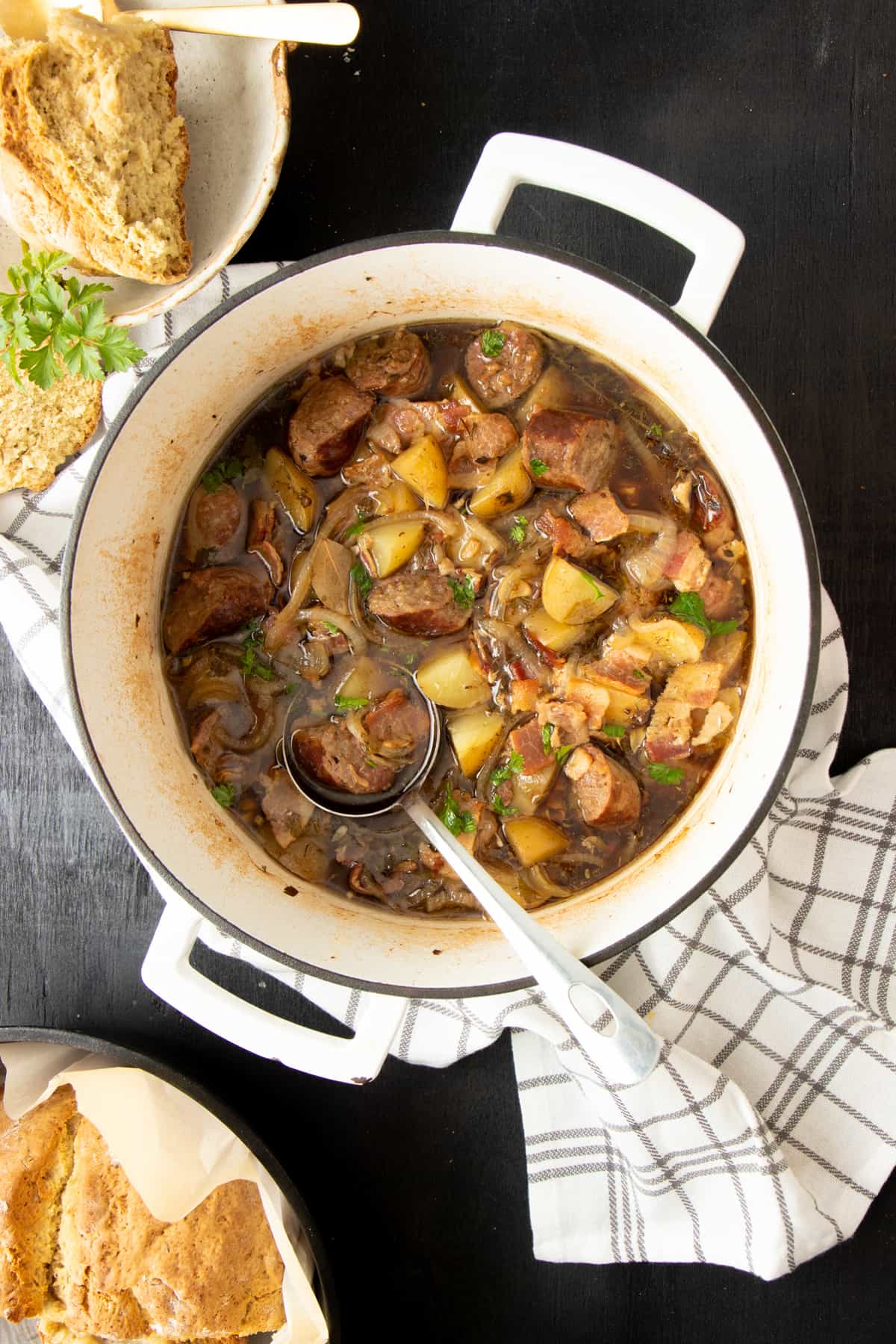
What is Irish coddle anyway?
If you’ve never had Dublin coddle before, it’s somewhat like the Irish version of beef stew. It’s bacon, pork sausages, onions, and potatoes, all long-stewed in a thick brown gravy. Everything I’ve seen about coddle talks about its working-class roots. This isn’t a delicate meal. This is the kind of meal that can slow cook away in the oven for hours and hours and hours while you’re working hard, and still be delicious when you come home.
Another tidbit I’ve read about coddle—every family seems to have their own special recipe. One true “authentic” version of coddle doesn’t really exist—it changes based on what’s available. Basically, you put whatever you have kicking around your kitchen into a pot, and it always turns out delicious. Because bacon. My version will guarantee tasty results, but feel free to experiment!
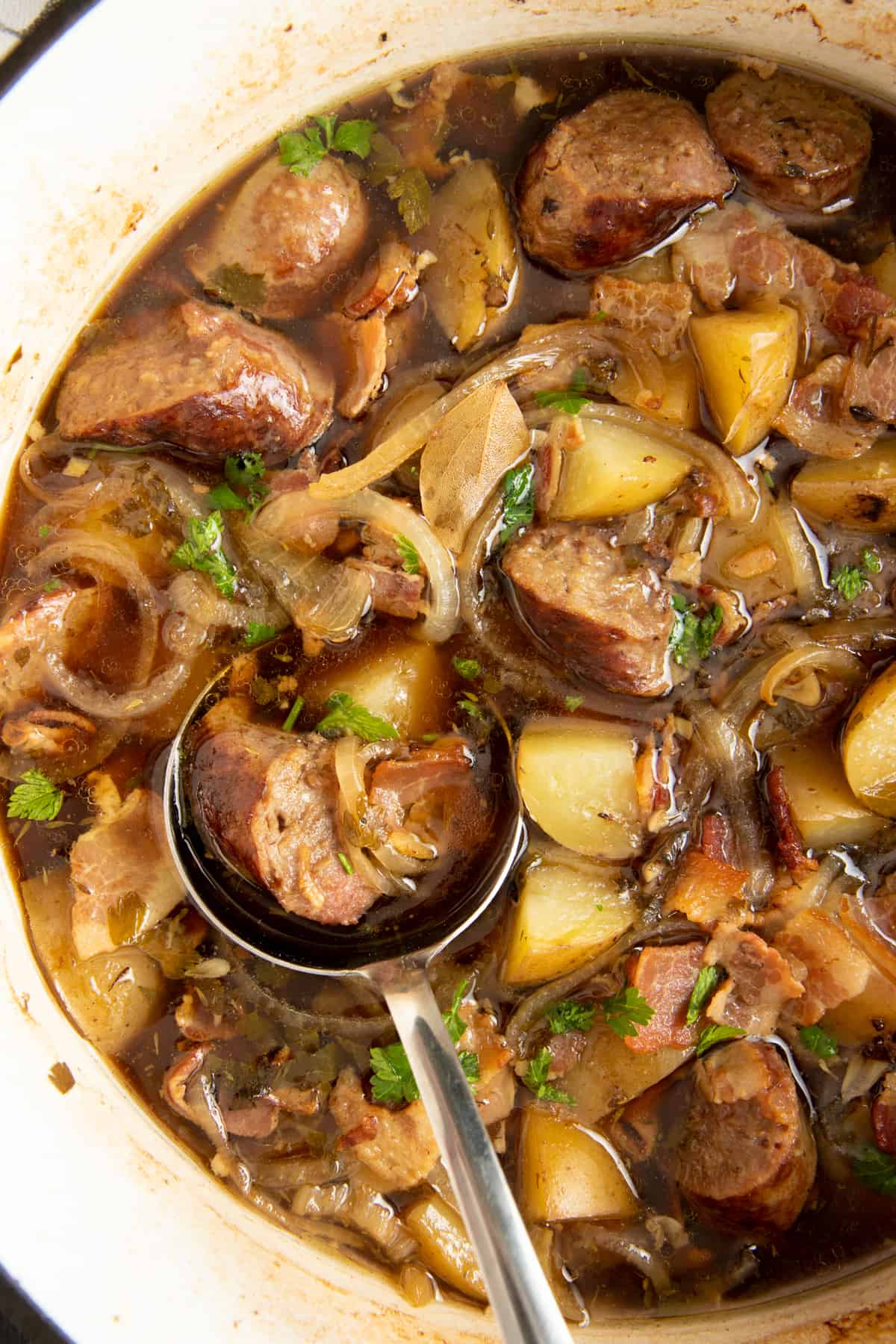
Can you make this in the slow cooker?
This is a slow-cooked recipe that I actually don’t recommend doing in the slow cooker! This coddle cooks for 2-3 hours in a very low oven, and while you could do it in the slow cooker, most slow cookers cook with very moist heat. Sometimes I find that moist heat actually makes potatoes go mushy instead of tender and soft. And considering this stew is 75% about the delicious, pillowy potato bites? No one wants them to be mushy. Mushy potatoes are great for mashed potatoes, less great for a stew.
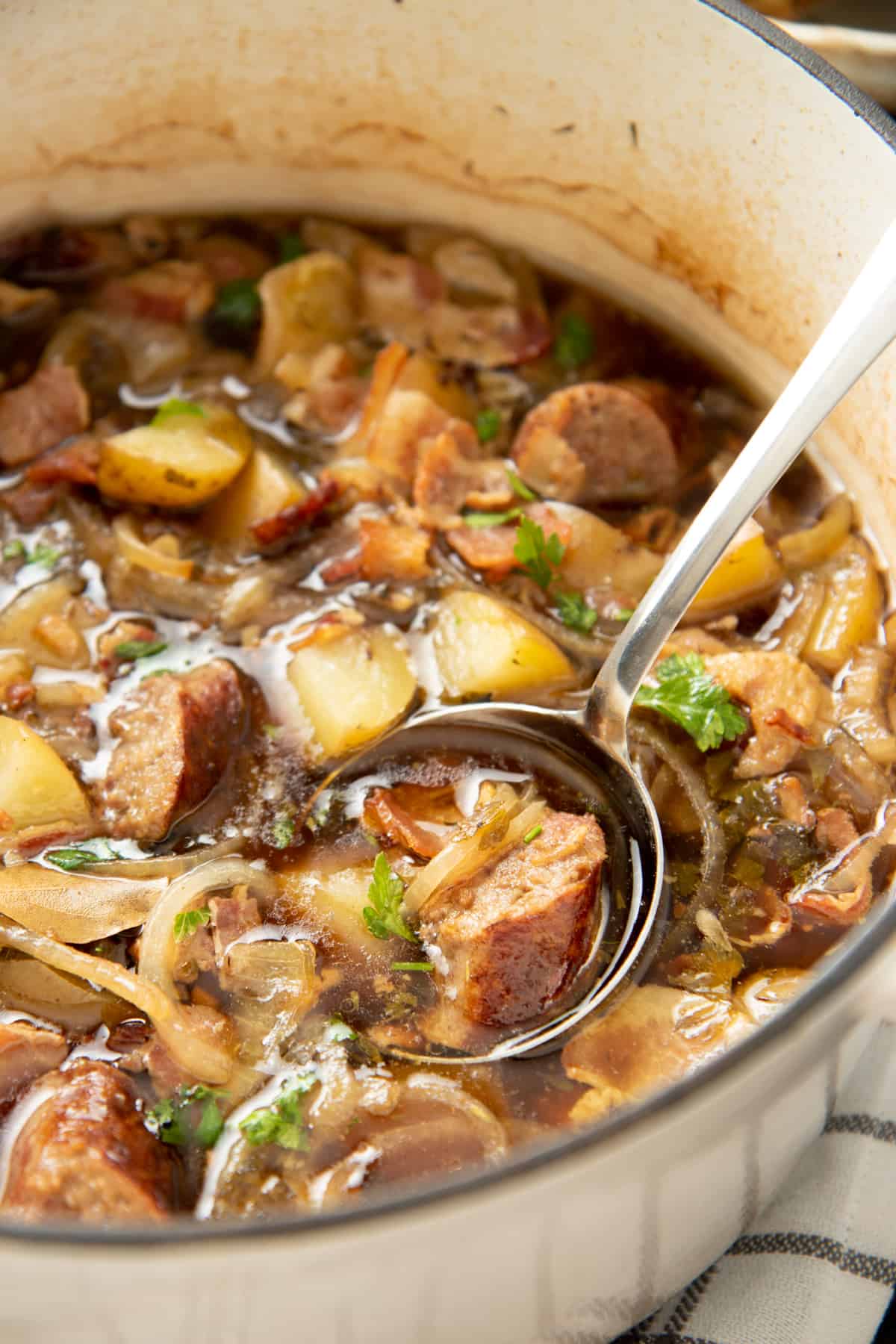
Instead, I recommend investing in a nice, sturdy, cast iron Dutch oven, and doing this baby at a low temp in your oven. There are a lot of really beautiful and really expensive Dutch ovens out there, but the one I always recommend to folks is the Lodge Enameled Cast Iron Dutch Oven. It runs right around $60, comes in beautiful colors, and works like a champ! I’ve had mine for years.
What kind of sausage do you use in coddle?
Traditional Irish sausages can be a bit tricky to track down here in the U.S., so I recommend going with any high-quality pork sausage you can find. I’ve used both bratwurst and Polish sausage in this recipe with good results.
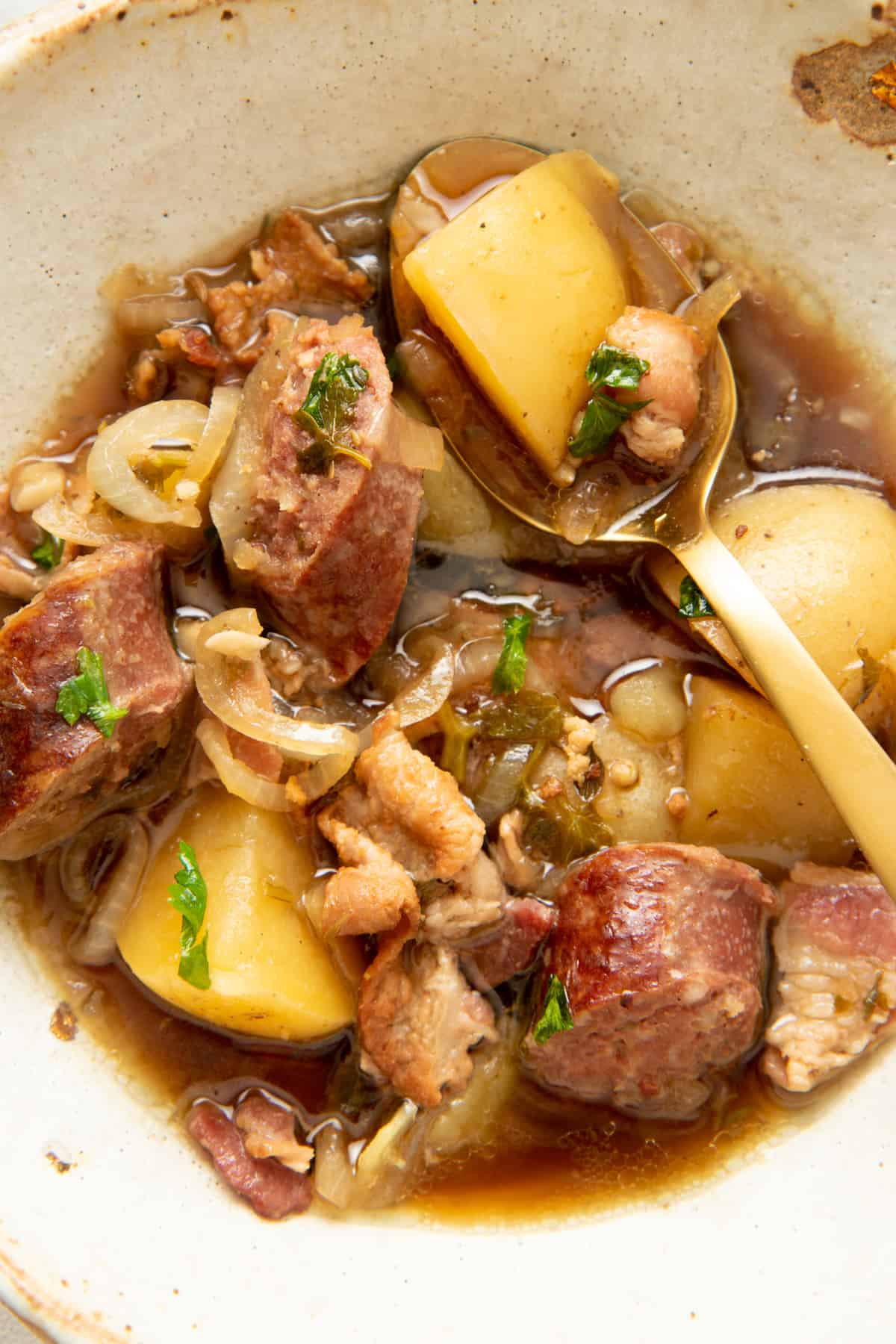
What’s the best kind of beer to use in this stew?
Why, Guinness, of course! I highly recommend keeping on theme here and going with Guinness stout. Thanks to some wonderful Dubliners that took the time to comment on this post (seriously, thank you!), I now know that many people consider coddle a white stew with no beer in it. But Irish chef and author of The Irish Cookbook, Jp McMahon says in the headnotes for his coddle recipe that, “Often it contained a drop of Guinness (or it was eaten with plenty of pints and soda bread).” So if you choose to go the beer route, I think it’s safe to say that Guinness is a perfectly fine choice! Of course, any other dark beer would do the trick—either a stout or porter. Buy a six-pack and put one in the stew and drink the rest with dinner! #pleasedrinkresponsibly
What if you don’t want to use beer?
No problemo! Just sub in more beef or chicken stock in place of the beer. It’ll change the flavor slightly, but your coddle will still be delicious.
What to serve with Dublin Coddle?
I think it’s just wrong to serve coddle without a side of warm, crusty homemade soda bread! I always like to make a green salad to go along with the coddle and bread to give us something fresh on our plates, too.
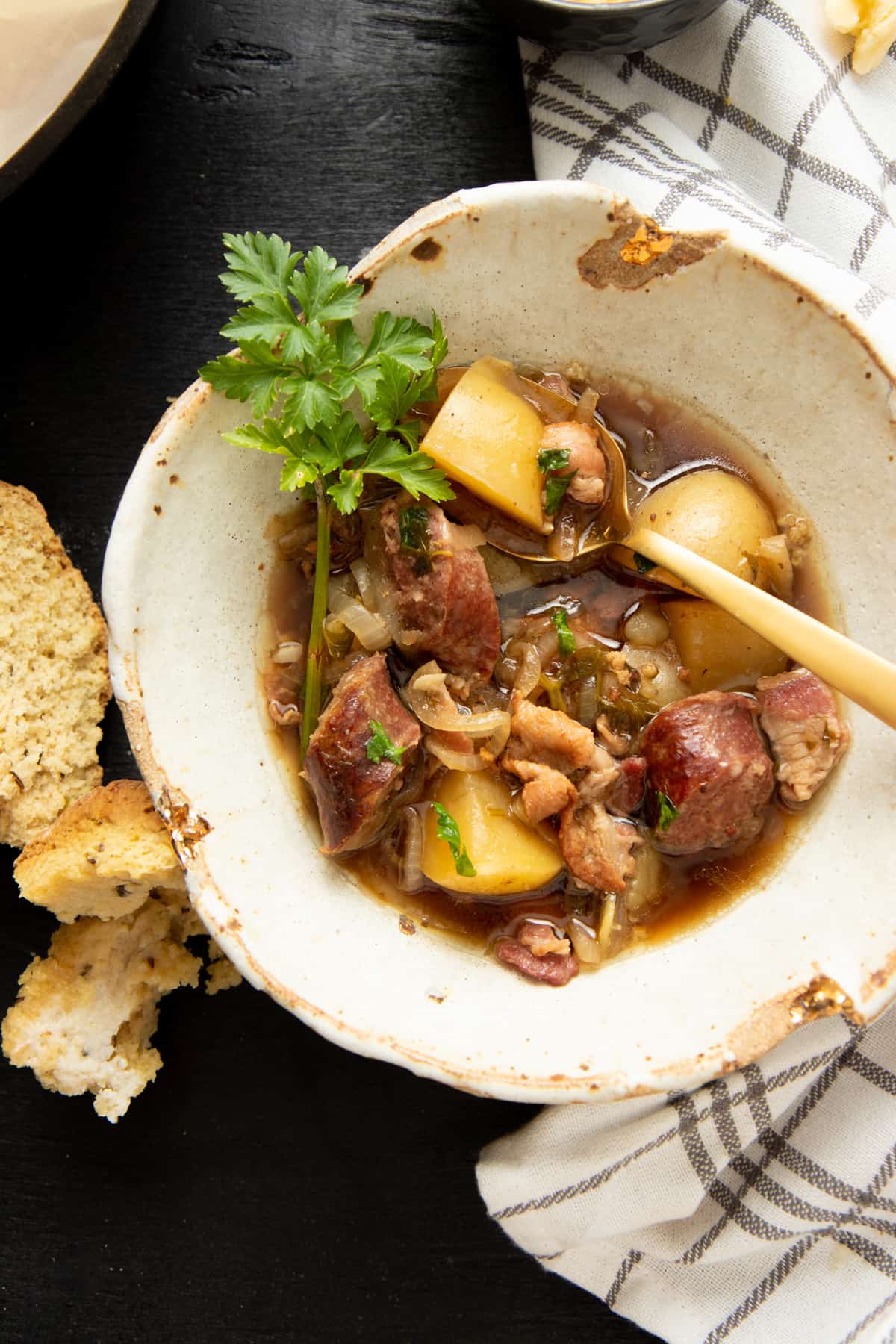
It’s easy to think that there is no way this Dublin Coddle is going to be flavorful enough. It seems too simple to be delicious, but magic happens in that oven! Seriously. Mag-ic. This dish is bursting with flavor that only gets better and better as leftovers. Enjoy!
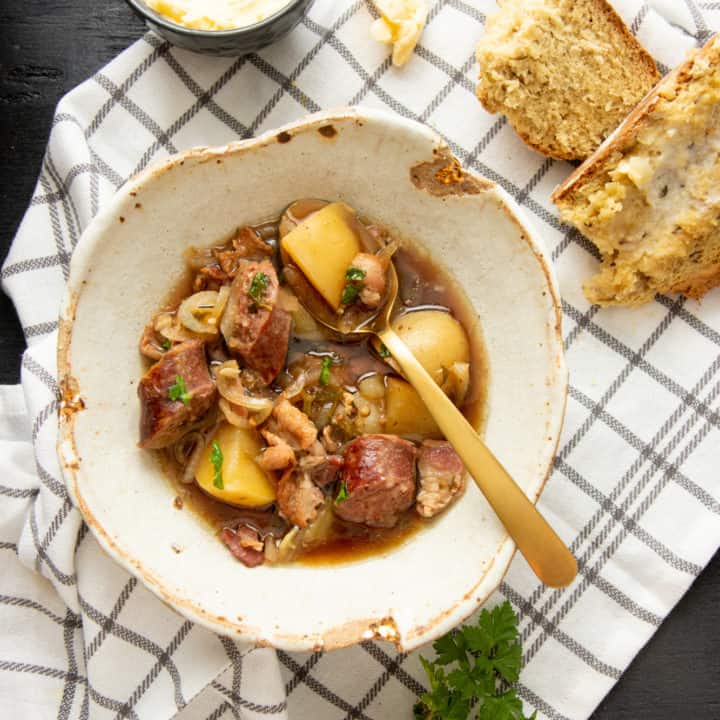
Dublin Coddle
Dublin Coddle is a traditional Irish potato and sausage stew that slow cooks in the oven. It’s great for St. Patrick’s Day or any day you need comfort food!
Ingredients
- 8 slices bacon, chopped into small pieces
- 1 pound high-quality pork sausages (see notes)
- 3 tablespoons all-purpose flour
- 1 bottle Guinness beer (see notes)
- 2 pounds potatoes, peeled and cut into bite-sized pieces
- 2 large onions, cut into slices
- 4 cloves garlic, minced
- 4 tablespoons fresh minced parsley
- 3 bay leaves
- 1 teaspoon dried thyme
- Fresh cracked black pepper
- 2 cups beef, ham, or chicken broth
Instructions
- Preheat the oven to 300°F.
- Heat a large, oven-proof Dutch oven over high heat. Add in the bacon and cook until crisp, about five minutes. Remove the bacon to drain on paper towels. Leave the grease in the Dutch oven.
- Add the sausages in, a few at a time (don't crowd the pan), and cook on each side until just golden brown—no need to cook all the way through. Remove to a plate and continue with additional sausages. Remove to plate. When cool enough to handle. Slice into 1" pieces.
- Reduce the heat to low, and then whisk in the flour. Cook for 2 minutes, whisking constantly. Then remove from heat completely.
- Whisk in the bottle of Guinness (see notes if you'd like to not use beer).
- Place half of the potatoes in the gravy, followed by half of the onions, half of the garlic, half of the bacon, half of the sausages, half of the parsley, the bay leaves, the thyme, and black pepper. Repeat layers with the remaining ingredients.
- Pour the broth over the whole thing. Place lid on, and bake in preheated oven for at least 2 hours (see notes).
Notes
If you can find traditional Irish pork sausages, that'd be awesome, but honestly, any good-quality pork sausages will do. Use whatever you can find and you like (bratwurst, polish sausage, even good-quality breakfast sausage).
Between the bacon, sausages, and broth, this dish is inherently very salty. Do not add more salt without tasting it first! I almost never add additional salt when making coddle.
If you want to skip using the beer, just sub in 1 1/2 additional cups of whatever broth you are using.
The coddle will be ready to eat after 2 hours in the oven, but it can easily stay cooking for 3-5 hours without any consequence. This isn't a delicate dish. You don't have to worry about breaking it.
Nutrition Information:
Yield: 6 Serving Size: 1Amount Per Serving: Calories: 770Total Fat: 42gSaturated Fat: 15gTrans Fat: 0gUnsaturated Fat: 24gCholesterol: 161mgSodium: 1314mgCarbohydrates: 44gFiber: 4gSugar: 5gProtein: 50g
At Wholefully, we believe that good nutrition is about much more than just the numbers on the nutrition facts panel. Please use the above information as only a small part of what helps you decide what foods are nourishing for you.

